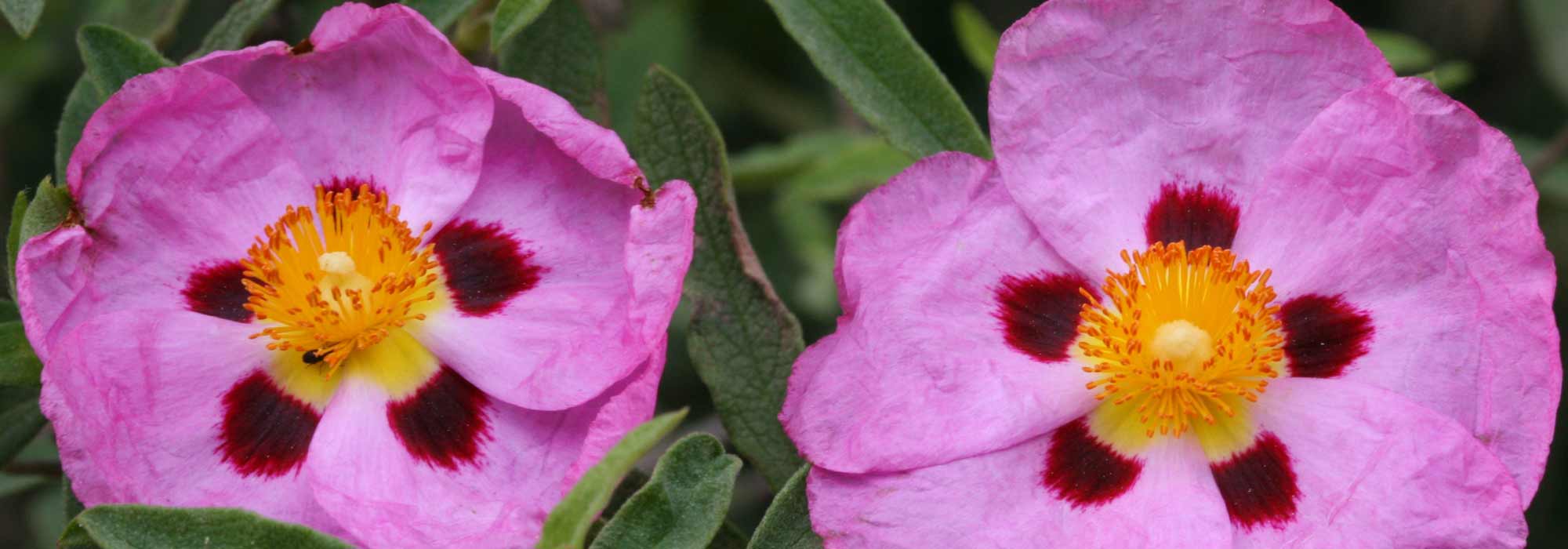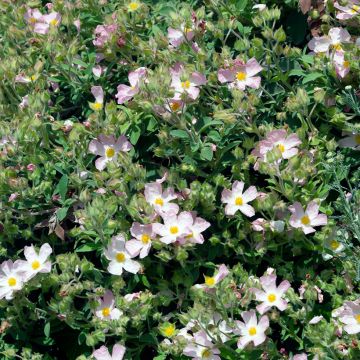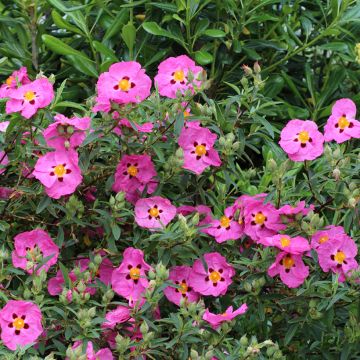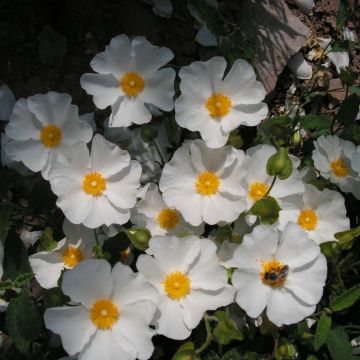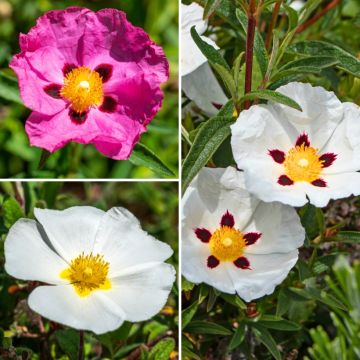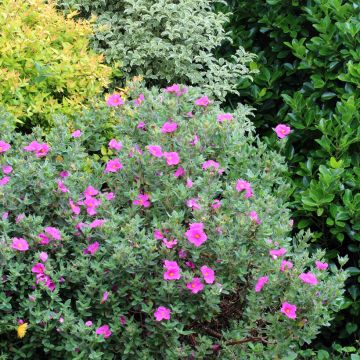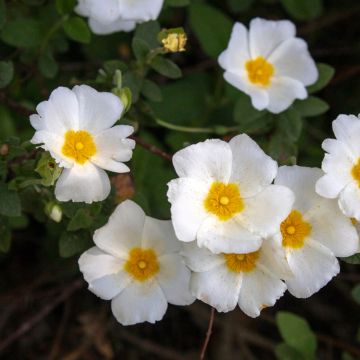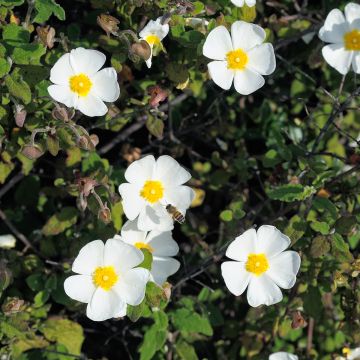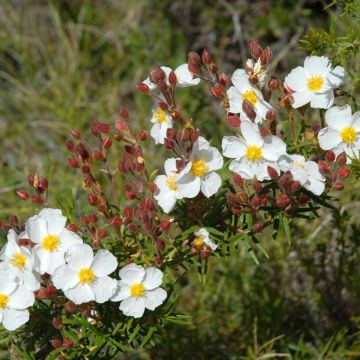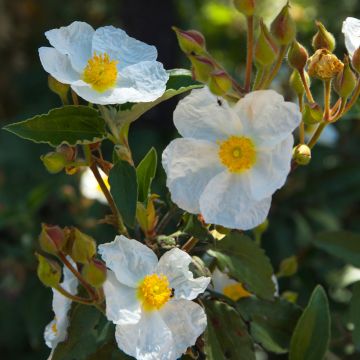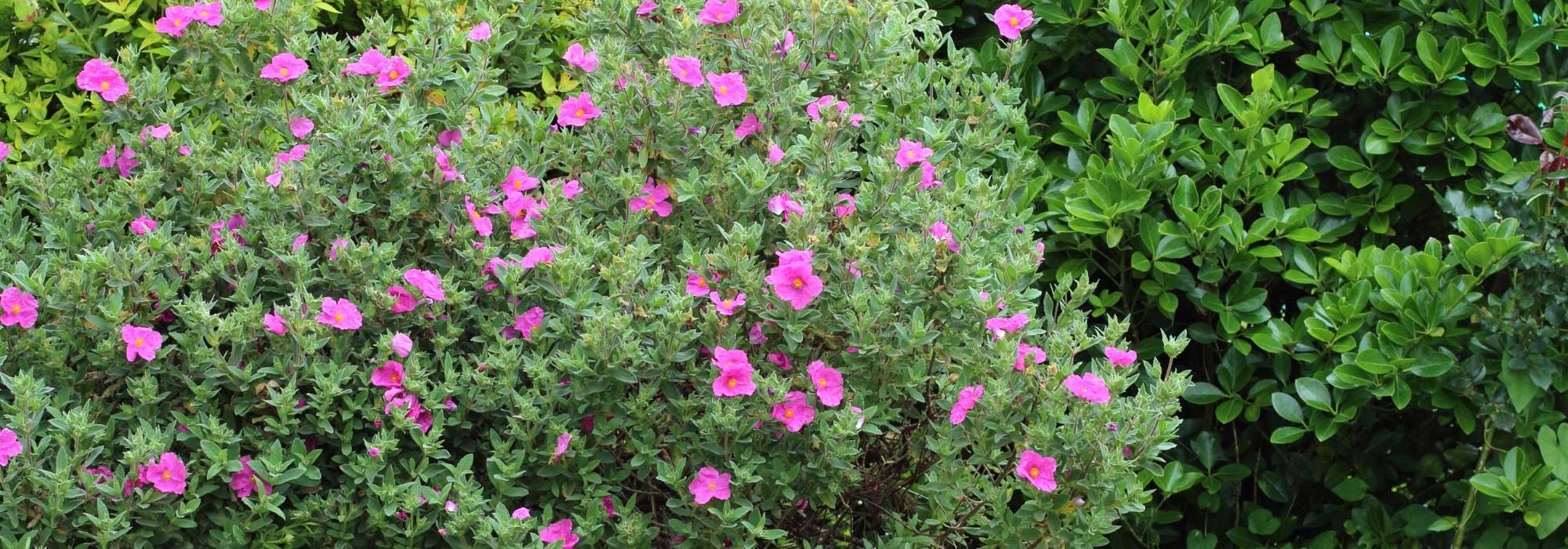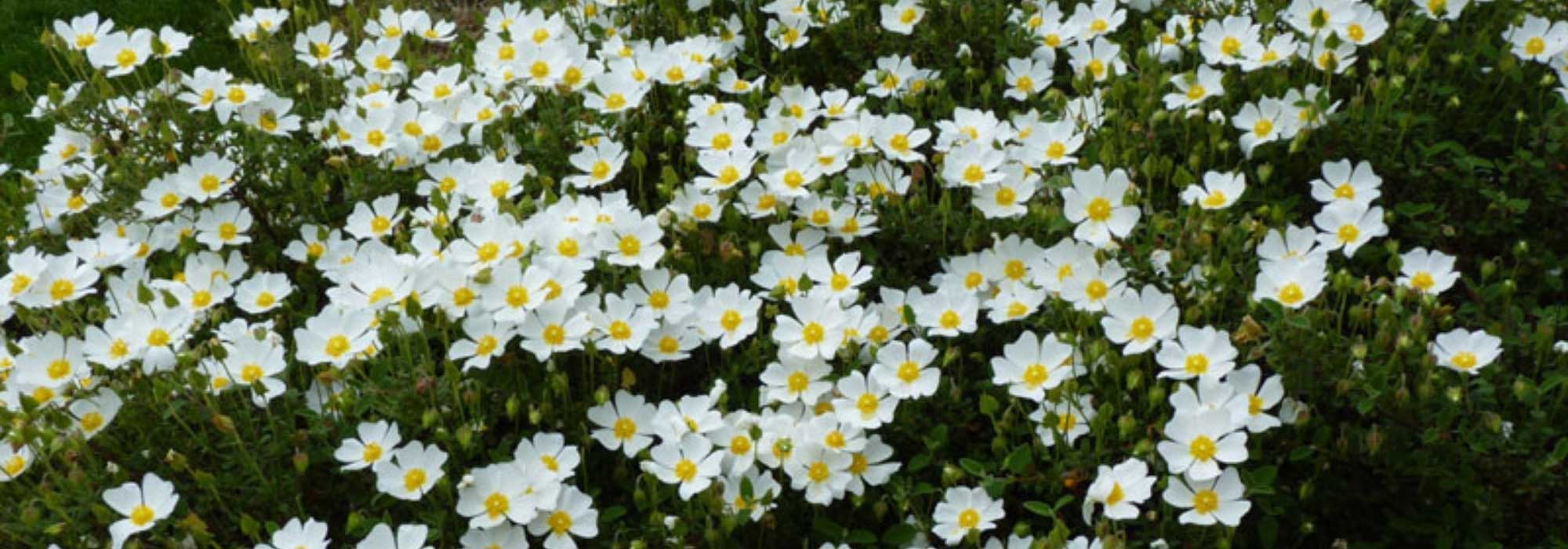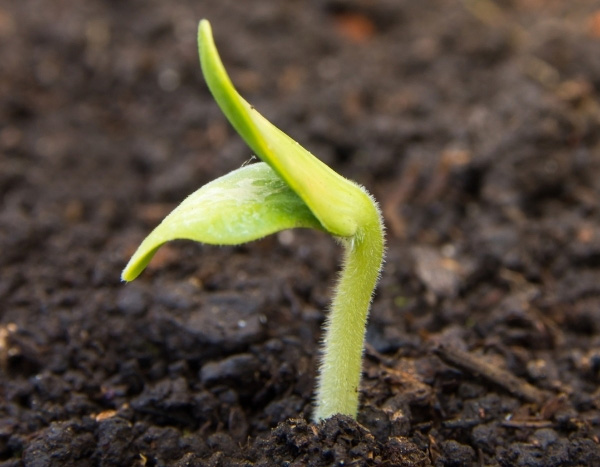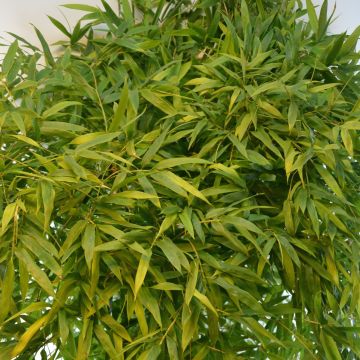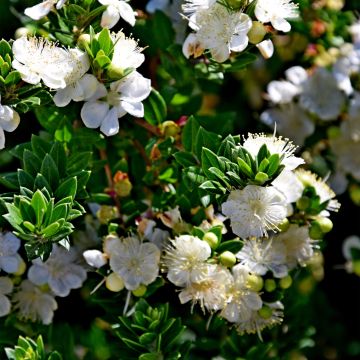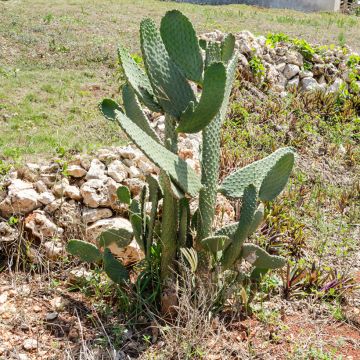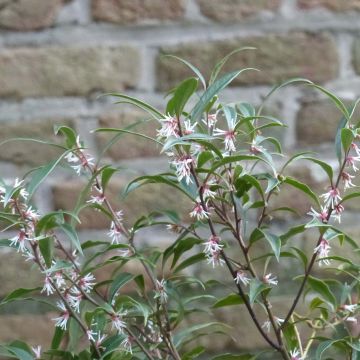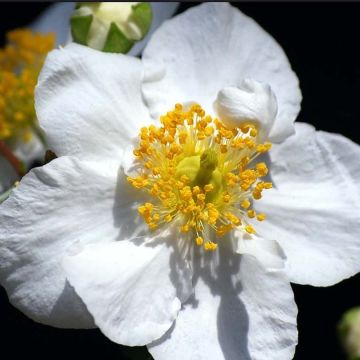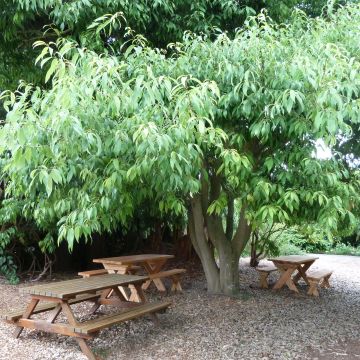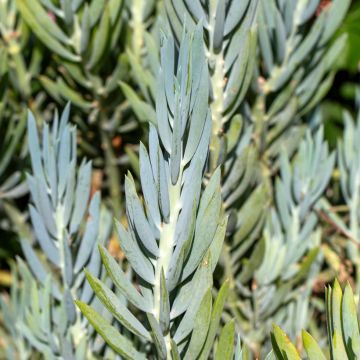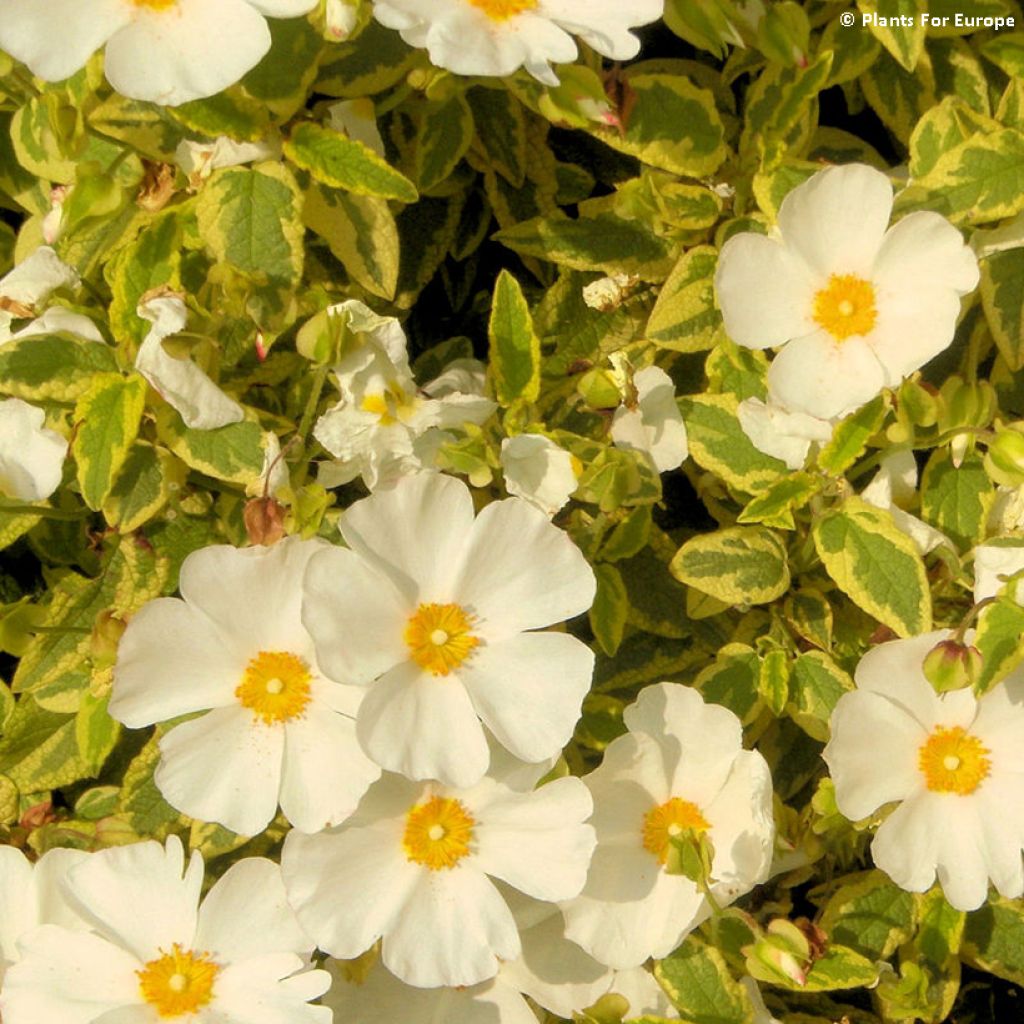

Cistus Little Miss Sunshine - Rockrose
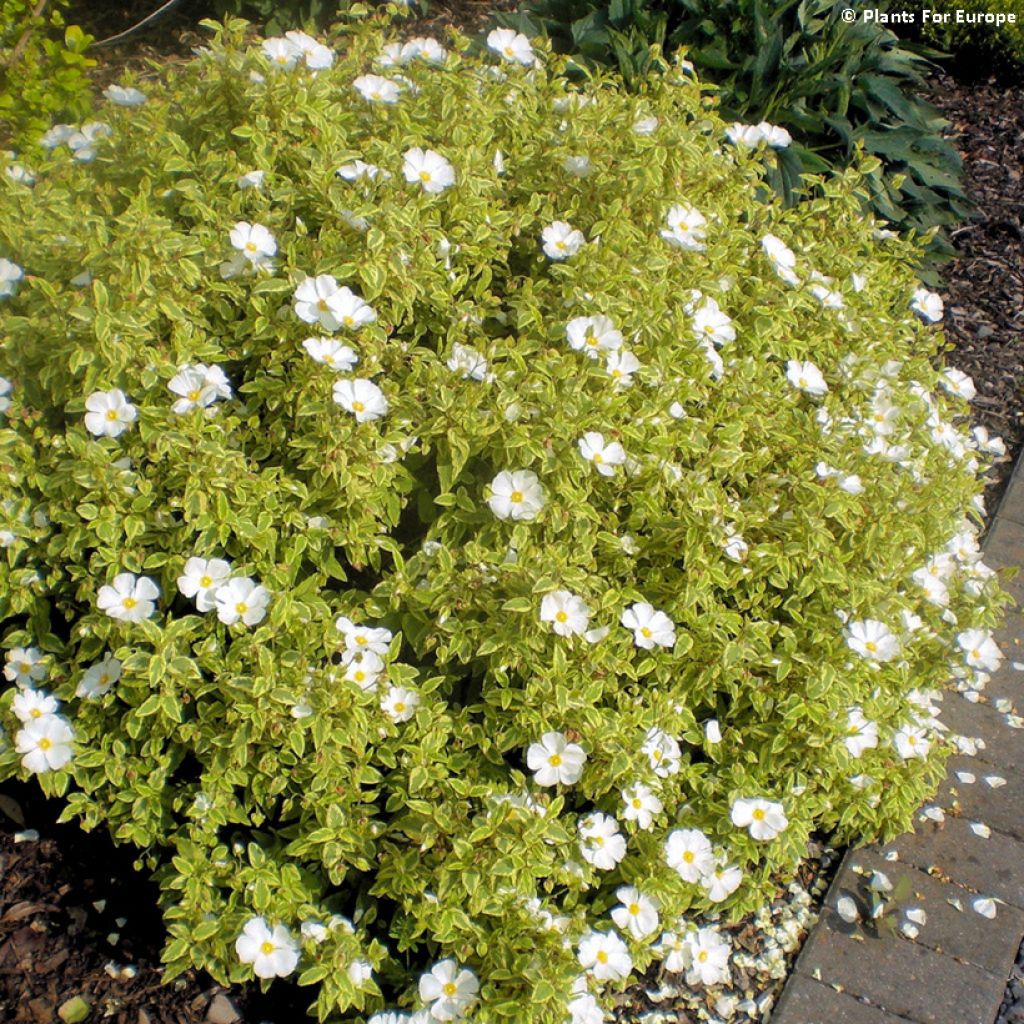

Cistus Little Miss Sunshine - Rockrose
Cistus Little Miss Sunshine - Rockrose
Cistus x corbariensis Little Miss Sunshine ® 'Dunnecis'
Rockrose
Plant received in perfect condition. Planted a week ago, it seems to have recovered well. To be continued.
Dominique , 06/09/2024
Special offer!
Receive a €20 voucher for any order over €90 (excluding delivery costs, credit notes, and plastic-free options)!
1- Add your favorite plants to your cart.
2- Once you have reached €90, confirm your order (you can even choose the delivery date!).
3- As soon as your order is shipped, you will receive an email containing your voucher code, valid for 3 months (90 days).
Your voucher is unique and can only be used once, for any order with a minimum value of €20, excluding delivery costs.
Can be combined with other current offers, non-divisible and non-refundable.
Home or relay delivery (depending on size and destination)
Schedule delivery date,
and select date in basket
This plant carries a 24 months recovery warranty
More information
We guarantee the quality of our plants for a full growing cycle, and will replace at our expense any plant that fails to recover under normal climatic and planting conditions.

Would this plant suit my garden?
Set up your Plantfit profile →
Description
The Cistus x hybridus Little Miss Sunshine is a superb variety of Rockrose with green foliage highlighted by a yellow margin, enhanced with a touch of pink in winter. This evergreen Mediterranean shrub forms a well-rounded and compact clump, adorned all summer with pretty single white flowers with a yellow centre. Perfectly adapted to drought, tolerating wind well and capable of adapting to most soils, except those that are too chalky, it thrives in poor soils. Its main requirement is good drainage, as excess water would be fatal to it. Moderately hardy (-10°C (14°F) to -12°C (10.4°F)), it can easily be grown in pots in colder regions.
The Cistus x hybridus var. corbariensis is a spontaneous hybrid between C. populifolius var. populifolius and C. salviifolius, two species belonging to the Cistaceae family, which are found in the wild in the rocky scrubland of the Corbières. There are about fifty species of Cistus, and while they all have a characteristic family resemblance, some have pink flowers and others have white flowers, with the majority being lime-loving species, while some grow in neutral or even acid soils. Their ease of crossbreeding has also resulted in many natural hybrids.
Little Miss Sunshine is a horticultural variety, selected for its multiple ornamental qualities. It naturally forms a well-rounded clump, about 70 to 80cm (27.6 to 31.5in) in all directions at maturity. This also makes it easy to grow in a pot to decorate a terrace or balcony, where it will withstand exposure to wind and sun, as well as light annual pruning to maintain its size and proportions.
Its foliage is particularly decorative, consisting of small variegated leaves. The centre of the leaf is light green when young, then slightly darker, while an irregular yellow margin runs along the entire periphery. It thus forms a dense and luminous mass of vegetation, while being very resistant to the sun, which is not common. In winter, the tips of the shoots turn pink, further enhancing the interest of this shrub.
The flowering is also remarkable, spreading from July to September in the form of pretty single white flowers. Composed of 5 slightly curved petals in a cup shape, the corolla, about 4cm (1.6in) in diameter, is adorned with a yellow stamen at its centre, creating a gentle contrast of colours, perfectly matched with the foliage. Each flower lasts only one day and disappears in the late afternoon, leaving a shower of petals on the ground. But the countless buds ensure a succession of flowers for several weeks, at a time of year when shrub flowering becomes rarer.
This variety is not very hardy, which is why it should be grown in pots in harsher climates. This will also prevent it from being exposed to the damp cold that it dislikes, as it needs well-drained soil to thrive. Its preferred climate is clearly Mediterranean, it loves the heat, is very resistant to drought and wind, and tolerates poor, neutral, acidic, and even slightly chalky soils. It is the epitome of a low-maintenance plant that is not susceptible to insects or diseases.
The Little Miss Sunshine Corbières Rockrose is an excellent rock garden plant, which will need good soil drainage and planting in a south-facing position to make the most of the sun. In southern regions, it can also be planted in borders, alongside other plants with similar preferences. The Myrtus communis Tarentina, with its dark green, slender, and pointed evergreen leaves, will create a double contrast of shape and colour with this Cistus. In the back of the border, an Acacia baileyana Songlines, a Mimosa with grey-green foliage, will enrich the range of hues, especially as it will be covered in late winter with a vibrant yellow bloom.
Cistus Little Miss Sunshine - Rockrose in pictures
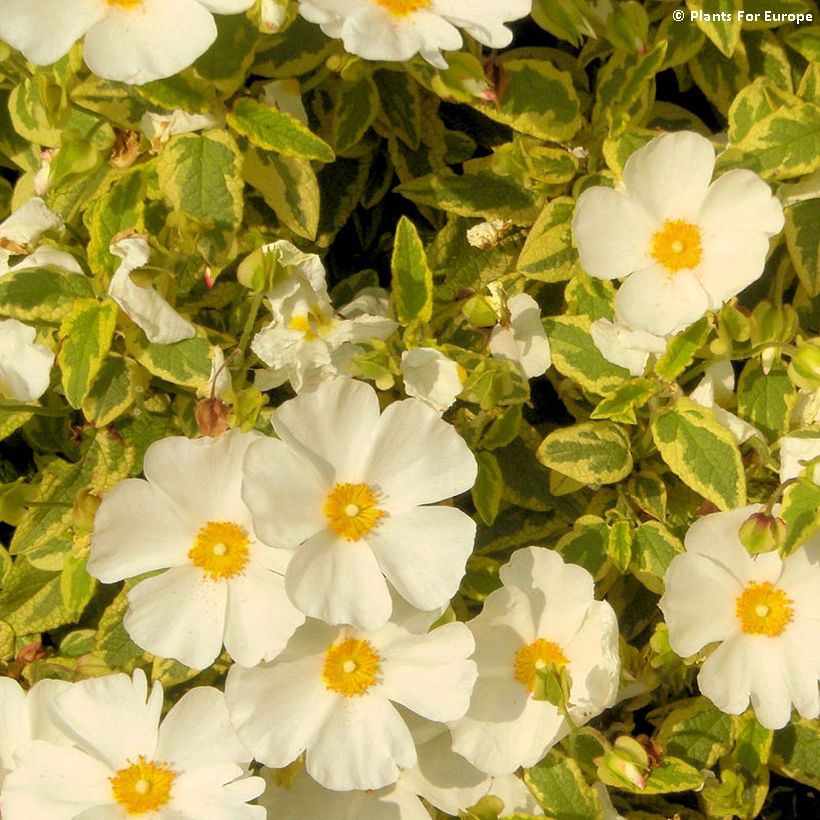

Plant habit
Flowering
Foliage
Botanical data
Cistus
x corbariensis
Little Miss Sunshine ® 'Dunnecis'
Cistaceae
Rockrose
Cultivar or hybrid
Other Cistus - Rockrose
View all →Planting and care
Cistus x hybridus Little Miss Sunshine requires a perfectly drained, stony or sandy, poor, acidic, neutral or slightly chalky soil. Plant it after the last frost in the north, and in September-October in hot and dry climates. It enjoys the sun but tolerates partial shade well in the south, on the edge of the undergrowth. It does not mind competition from the roots of large trees. In nature, it also grows in the shade of pine and evergreen trees, but will be less floriferous. It dislikes icy winds that can destroy its flower buds. Under prime conditions, it is hardy down to -10 or -12°C (14 or 10.4°F) and will live longer. Mulch it in winter in the coldest regions and protect from the cold as much as possible. Place it in the warmest corner of the garden, in full sun, against a south-facing wall, in a stony or sandy slope. Plant in any well-drained soil. Wet soil would be fatal to it in winter, but also in summer which is its period of vegetative rest. The combination of heat and humidity leads to the development of a fungus that attacks the collar of the plant. You can lightly prune the stems after flowering to encourage branching, but avoid severe pruning.
Planting period
Intended location
Care
Planting & care advice
-
, onOrder confirmed
Reply from on Promesse de fleurs
Similar products
Haven't found what you were looking for?
Hardiness is the lowest winter temperature a plant can endure without suffering serious damage or even dying. However, hardiness is affected by location (a sheltered area, such as a patio), protection (winter cover) and soil type (hardiness is improved by well-drained soil).

Photo Sharing Terms & Conditions
In order to encourage gardeners to interact and share their experiences, Promesse de fleurs offers various media enabling content to be uploaded onto its Site - in particular via the ‘Photo sharing’ module.
The User agrees to refrain from:
- Posting any content that is illegal, prejudicial, insulting, racist, inciteful to hatred, revisionist, contrary to public decency, that infringes on privacy or on the privacy rights of third parties, in particular the publicity rights of persons and goods, intellectual property rights, or the right to privacy.
- Submitting content on behalf of a third party;
- Impersonate the identity of a third party and/or publish any personal information about a third party;
In general, the User undertakes to refrain from any unethical behaviour.
All Content (in particular text, comments, files, images, photos, videos, creative works, etc.), which may be subject to property or intellectual property rights, image or other private rights, shall remain the property of the User, subject to the limited rights granted by the terms of the licence granted by Promesse de fleurs as stated below. Users are at liberty to publish or not to publish such Content on the Site, notably via the ‘Photo Sharing’ facility, and accept that this Content shall be made public and freely accessible, notably on the Internet.
Users further acknowledge, undertake to have ,and guarantee that they hold all necessary rights and permissions to publish such material on the Site, in particular with regard to the legislation in force pertaining to any privacy, property, intellectual property, image, or contractual rights, or rights of any other nature. By publishing such Content on the Site, Users acknowledge accepting full liability as publishers of the Content within the meaning of the law, and grant Promesse de fleurs, free of charge, an inclusive, worldwide licence for the said Content for the entire duration of its publication, including all reproduction, representation, up/downloading, displaying, performing, transmission, and storage rights.
Users also grant permission for their name to be linked to the Content and accept that this link may not always be made available.
By engaging in posting material, Users consent to their Content becoming automatically accessible on the Internet, in particular on other sites and/or blogs and/or web pages of the Promesse de fleurs site, including in particular social pages and the Promesse de fleurs catalogue.
Users may secure the removal of entrusted content free of charge by issuing a simple request via our contact form.
The flowering period indicated on our website applies to countries and regions located in USDA zone 8 (France, the United Kingdom, Ireland, the Netherlands, etc.)
It will vary according to where you live:
- In zones 9 to 10 (Italy, Spain, Greece, etc.), flowering will occur about 2 to 4 weeks earlier.
- In zones 6 to 7 (Germany, Poland, Slovenia, and lower mountainous regions), flowering will be delayed by 2 to 3 weeks.
- In zone 5 (Central Europe, Scandinavia), blooming will be delayed by 3 to 5 weeks.
In temperate climates, pruning of spring-flowering shrubs (forsythia, spireas, etc.) should be done just after flowering.
Pruning of summer-flowering shrubs (Indian Lilac, Perovskia, etc.) can be done in winter or spring.
In cold regions as well as with frost-sensitive plants, avoid pruning too early when severe frosts may still occur.
The planting period indicated on our website applies to countries and regions located in USDA zone 8 (France, United Kingdom, Ireland, Netherlands).
It will vary according to where you live:
- In Mediterranean zones (Marseille, Madrid, Milan, etc.), autumn and winter are the best planting periods.
- In continental zones (Strasbourg, Munich, Vienna, etc.), delay planting by 2 to 3 weeks in spring and bring it forward by 2 to 4 weeks in autumn.
- In mountainous regions (the Alps, Pyrenees, Carpathians, etc.), it is best to plant in late spring (May-June) or late summer (August-September).
The harvesting period indicated on our website applies to countries and regions in USDA zone 8 (France, England, Ireland, the Netherlands).
In colder areas (Scandinavia, Poland, Austria...) fruit and vegetable harvests are likely to be delayed by 3-4 weeks.
In warmer areas (Italy, Spain, Greece, etc.), harvesting will probably take place earlier, depending on weather conditions.
The sowing periods indicated on our website apply to countries and regions within USDA Zone 8 (France, UK, Ireland, Netherlands).
In colder areas (Scandinavia, Poland, Austria...), delay any outdoor sowing by 3-4 weeks, or sow under glass.
In warmer climes (Italy, Spain, Greece, etc.), bring outdoor sowing forward by a few weeks.






























